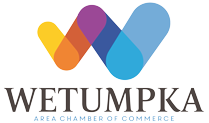The Design Flaws That Are Quietly Killing Your Brand—and What You Can Do About It
Every touchpoint a customer has with a business leaves an impression—some obvious, others invisible but no less impactful. That’s the power of design. It influences perception long before words do, acting as the unspoken handshake of your brand. And yet, too many businesses treat design like a surface issue, slapping a logo on a website and calling it a day. In truth, design is strategy in disguise. When it’s done poorly, it corrodes trust, reduces clarity, and makes even the best products feel second-rate. But the upside? Most of these mistakes are fixable, often with more speed and less cost than assumed.
Cluttered Layouts Are a Fast Track to User Fatigue
Design should invite, not exhaust. When a website or app feels like an overstuffed closet—too many fonts, too many buttons, too much noise—users disengage. It’s not because they’re lazy; it’s because attention is finite. When everything screams for it, nothing is heard. Smart design works like editing: remove the unnecessary so the essential can breathe. If you need a place to start, simplify your homepage. Fewer choices lead to faster actions.
Overdesigned Logos Can Actually Shrink Brand Recognition
A logo shouldn’t be an art piece—it’s a tool. And tools need to function quickly, especially in places where size and time are limited. Logos that rely on too much detail or stylized typography might look impressive on a pitch deck but fall apart on social icons or business cards. A strong mark works at two inches and twenty feet. Refinement is the name of the game here. The solution isn’t always a total overhaul—it might just be about pulling back instead of piling on.
Ignoring Accessibility Is Excluding Your Own Audience
A design that can’t be used by everyone is a design that fails, no matter how sleek it looks. Poor contrast, unreadable fonts, non-responsive interfaces—these all amount to closed doors for people with disabilities, older customers, or those navigating less-than-ideal tech environments. And accessibility isn't a checklist for compliance—it’s a lens through which everything else should be filtered. One fast way to course-correct? Run an audit using tools, then apply changes to color contrast, keyboard navigation, and semantic HTML. It’s not glamorous work, but it builds bridges.
Bad Cropping Sends the Wrong Visual Signal
An image that’s been awkwardly cropped or poorly framed can immediately cheapen the look of otherwise polished marketing materials. It creates tension where there should be ease, making visuals feel cramped, rushed, or visually confusing. Especially in design-heavy formats like websites or brochures, a lack of breathing room in imagery can throw off the entire composition. One way to elevate these assets without starting from scratch is to explore the applications of AI image extender tools, which can seamlessly expand backgrounds or reframe visuals to create a more balanced, intentional look.
Complicated Navigation Creates Customer Drop-Off Points
If it takes more than three seconds to figure out how to get from one page to another, something’s broken. Visitors shouldn’t need a map to explore your site. When navigation is buried, mislabeled, or just plain overwhelming, frustration creeps in fast. Streamlining your navigation doesn’t mean dumbing it down—it means designing it with empathy. Use real user behavior as your guide, not just internal logic. Reorganize based on patterns, not preferences.
Typography Mistakes Make You Look Amateur, Fast
Design lives and dies in the details, and no detail is more visible than type. Poor font pairing, inconsistent line spacing, and hard-to-read styles all chip away at professionalism. It's not just about choosing the “cool” font—it’s about clarity and tone. Fonts carry personality, and misusing them is like showing up to a board meeting in flip-flops. Start with two complementary fonts—one for headers, one for body—and master hierarchy. That alone can make your design feel intentional instead of improvised.
Design isn’t decoration. It’s function wrapped in aesthetics, behavior wrapped in visuals. When treated as an afterthought, it undermines even the most compelling ideas. But when given the attention it deserves, design becomes a lever—a quiet but powerful advantage. Businesses don’t need a rebrand to fix these mistakes; they need to see them for what they are: cracks in the foundation. And the sooner those cracks are sealed, the sooner trust, clarity, and momentum return. The good news? The best design decisions often come from simplifying, not adding more.
Join the Wetumpka Area Chamber of Commerce today and unlock unparalleled networking opportunities to elevate your business and strengthen our vibrant community!
This Hot Deal is promoted by Wetumpka Chamber of Commerce.


